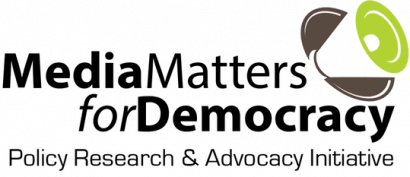On 8th April 2016, the Hamid Mir Judicial Commission report was leaked on social media. The report has been compiled by one of the strongest judicial commissions of Pakistan’s history, led by none other than the current Chief Justice, Justice Anwar Zaheer Jamali. The commission was formed on 21st April 2014, with a mandate to affix responsibility for the 19th April 2014 attack on Hamid Mir. Given the commission’s strength, one had dared to hope that its report would at least be able to show a way forward if not pin direct responsibility to the culprits. Sadly, the content of the leaked report leave one reeling with disappointment.
Not only has the commission failed to fulfil its basic mandate of ‘ascertaining facts, identifying culprits and fixing responsibility’ for the attack on Hamid Mir, the report also remains devoid of a single concrete or original recommendation to solve the case. In fact, rather than laying down anything that would help attain justice, the report appears to hold the victim responsible for producing evidence against the accused and puts media’s role into question.
The honourable judges have noted that the Investigating Officer of the case did not even go through the CCTV footage, or knew exactly how many witnesses had been interviewed. They note other inefficiencies in the manner of investigation and state, “such lapse clearly hinted at inefficiency, lack of commitment and dedication to duty on the part of law enforcing agencies”. Perhaps more importantly the commission notes; “in the process, improper considerations also could not be overruled”. What is surprising here is the fact that three honourable judges of the Supreme Court, the highest authority one seeks for justice, admit the inefficiency and possible ‘improper considerations’ by the law enforcement departments and yet do not chalk out a way that would allow the victim access to justice.
The commissions’ report also appears to hold Hamid Mir responsible for the failure to provide evidence. Section 33 of the leaked document states that the commissions’ inability to move in any particular direction to unearth the truth was “because he [Hamid Mir] was unable to give any clue about the culprit(s) involved”. One remains completely baffled by the assertion that a victim, who suffered six bullet wounds and lives with 2 embedded in his body, is being tasked with the responsibility to ascertain who the culprits were. Hamid Mir had in fact submitted a 100-page document detailing incidents of threats received and his own reactions. One wonders what else would be seen as a legitimate ‘clue’ about the culprits.
In addition, by bringing in question the role of the media and making multiple references to Section 5, enemies of the state and agencies of the neighbouring countries, the report ventures very far from it’s mandate of finding out who targeted Hamid Mir. Section 39 of the report that painstakingly elaborates the apparent conflict that arises when different constitutional rights come into play remains one of the biggest question marks in the report. The impression one gets is that the text has been framed to explain the ‘other’ perspective with regards to media coverage of sensitive issues; important to understand, but completely irrelevant in a scenario where one is dealing with an assassination attempt on a well known and esteemed journalist. Sadly, by linking the two together, the report almost attempts to give an explanation and thus accords certain legitimacy to those who target journalists.
The attacks on journalists, and often the following campaign to discredit those targeted remain a serious threat to the citizen’s constitutional rights to expression and information. It is unfortunate that a report coming from a high level commission, constituting of judges from the very court that is the final authority on upholding constitutional rights, appears to explain away the reasons for such attacks. The constitution of a judicial commission, even one that includes three honourable judges of the Supreme Court, remains an admission of failure of the system in place. The report and the manner of its disclosure simply reestablish the fact that the quest for justice for journal
